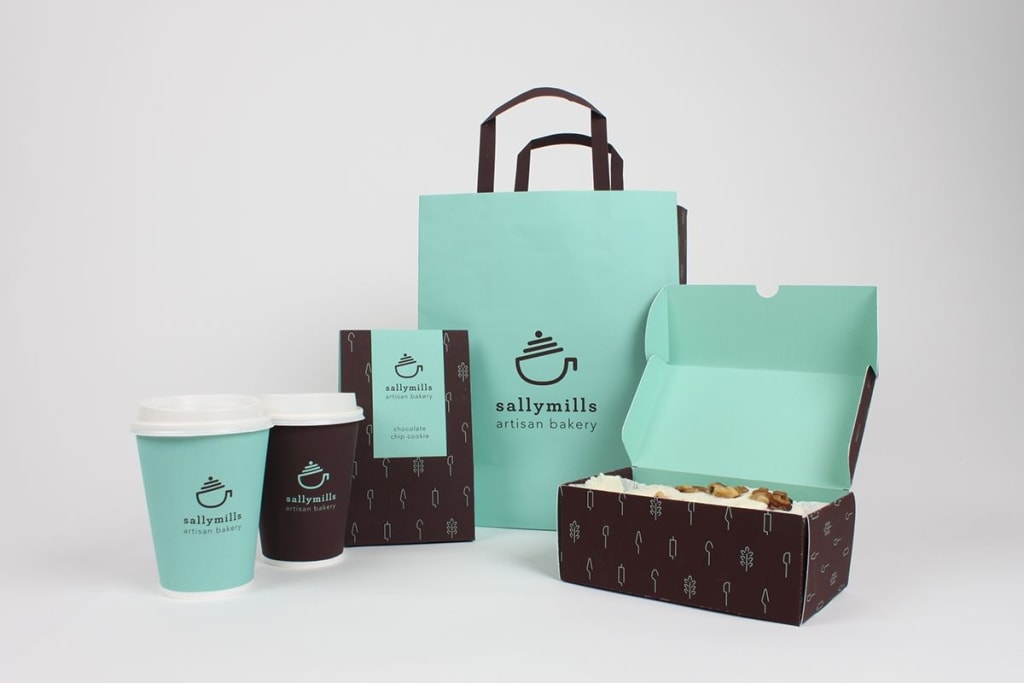How Custom Food Packaging Can Help Small Businesses Differentiate and Succeed
Custom food packaging boosts branding, product distinction, and shelf appeal, serving as a key marketing tool.

Introduction
Packaging is a crucial part of any food brand's identity and marketing. According to Importance of Product Packaging in the Food Industry, packaging serves important functions like preventing contamination and displaying product information. Most importantly, it represents a key touchpoint for customers to engage with your brand.
This is why custom food packaging can be invaluable for small food businesses looking to stand out. Rather than relying on generic, off-the-shelf packaging, custom options allow you to reinforce your brand identity and messaging through unique, specialized designs. As noted by Food Packaging—Roles, Materials, and Environmental Issues, packaging is a marketing tool that plays a pivotal role in product differentiation and shelf appeal. With custom food packaging, small businesses have an opportunity to create eye-catching products that capture consumer attention.
Brand Recognition
Custom logos, colors, and designs reinforce brand identity and help customers recognize your products on shelves. Using your brand's logo, color scheme, and other visual elements creates cohesive and consistent branding across your packaging and products. This builds familiarity and loyalty among customers. According to research from Display Pack, custom packaging increases brand recognition by up to 80% (1). With so many products on shelves, custom branding makes you stand out. Using a unique and memorable logo, font, imagery or color palette on your packaging ensures your brand leaves an impression.
Custom packaging allows you to create a visual brand identity that is tailored to your products. Rather than relying on generic packaging, you can design boxes, bags and containers that align with your brand story. This consistency across all touchpoints strengthens your connection with customers. When shoppers see your custom colors and logos on the shelf, they will instantly recognize your brand. This leads to repeat purchases and brand loyalty over time.
Product Differentiation
Custom packaging allows you to create unique shapes, sizes, and features that make your product stand out from competitors. This differentiation draws attention amidst competition on crowded store shelves. Custom boxes are especially useful for limited editions and special offerings, as you can produce custom packaging to match the unique product inside.
For example, a custom hexagonal box could house a specialty batch of chocolates for a holiday. The unique shape immediately catches the eye. Or, a cereal brand could release a limited edition flavor in a custom box featuring bright colors and bold graphics. This differentiation from the normal packaging makes the special edition more compelling. The unique packaging adds to the product's overall appeal.
Shelf Appeal
Custom food packaging can help your products stand out on crowded store shelves. Eye-catching colors, graphics, and finishes make your brand pop visually (Shelf Appeal). Using matte or glossy coatings creates more visual interest than plain cardboard boxes. Unique shapes and sizes also allow your products to take up more facings and have better visibility than generic rectangular boxes (What is Shelf Appeal and Why Does it Matter?). The right packaging quickly catches shoppers' eyes in the aisle and entices them to pick up your product to learn more. Investing in custom designs is crucial for differentiation at the retail level.
Functionality
Custom food packaging offers many functional benefits tailored specifically for food products. One key advantage is the ability to design custom inserts and partitions that securely separate and store different food items. For example, cookies can be stored in separate compartments to prevent breakage, while meat and cheese can be separated to avoid cross-contamination. Custom structures like slide boxes, tear strips, and dispensers can also be incorporated for easy opening, controlled dispensing, and secure resealing after first use.
Materials and features can be chosen to optimize food storage and freshness too. Moisture barriers, gas barriers, and light barriers help extend shelf life for sensitive items. Food-safe inks, coatings, and adhesives ensure direct contact surfaces won't contaminate edibles. Thoughtful packaging engineered for each specific food type or preparation results in better protection, storage, and usability.
Sustainability
Custom food packaging offers opportunities to be more eco-friendly. For example, many suppliers now offer recycled paper or bioplastic materials that are compostable and renewable. Using these sustainable materials reduces plastic waste and your business's carbon footprint.
Well-constructed custom boxes that are durable and sturdy also lead to less waste. Since you can design boxes to fit your products precisely, you avoid excess materials and can ship more efficiently. The customizability allows you to be strategic and environmentally conscious with materials and design.
Opting for custom sizes rather than generic boxes reduces the need for excess filler packaging. With a tailored design, you can maximize every inch of space for an efficient, sustainable solution.
Packaging Design Process
The packaging design process is crucial for aligning your custom food boxes with your brand identity and positioning. As you develop the design, get creative with shapes, textures, special effects and other customizations that make your product stand out. However, don't forget to focus on functionality and food safety.
According to https://filestage.io/blog/packaging-design-process/, the packaging design process typically involves the following steps:
- Create a design brief outlining your brand goals and strategy
- Conduct research on your target market and users
- Brainstorm concepts and ideas
- Refine the design and gather feedback
- Finalize the design files and get approvals
As you go through this process, experiment with different shapes, colors, images, textures and other elements that reinforce your brand. But don't overlook practical needs like storage, sealing, openings, and other functional factors vital for food packaging.
By aligning aesthetics and functionality through a thoughtful design process, you can create custom food boxes that effectively represent your brand while safely containing your products.
Materials and Printing
When it comes to custom food packaging, there are many material options to choose from depending on your specific food product and packaging needs. Some common materials used in food packaging include:
Plastic films - Flexible pouches, bags and rollstock made from plastic films like PET, polypropylene and polyethylene are lightweight, durable, and protect against moisture and oxygen. They allow for high-quality printing.
Paper and paperboard - Paper boxes, cartons, cups and other containers provide stiffness and structure. Paper is recyclable and fiber-based materials are compostable. Paper allows for lithographic printing.
Aluminum foil - Foil pouches and containers block light, moisture and oxygen. The metal material can be formed into various shapes and sizes.
Glass - Glass jars and bottles are impermeable and allow products to be seen. Glass is recyclable but heavy in weight.
When it comes to printing on food packaging, common methods include flexography and lithography. Flexographic printing uses flexible raised plates to print on materials like plastic films on a rotary press. It allows for vibrant, high-coverage graphics. Lithographic printing which uses flat printing plates is ideal for paper-based materials. Special coatings and treatments like matte, gloss, soft touch, anti-microbial, oxygen scavenging, and waterproof can also be applied to enhance appearance, functionality and shelf life.
It's important to select the right materials and printing methods for your food product to achieve desired shelf life, appearance, sustainability and cost goals.
Choosing a Supplier
When selecting a custom food packaging supplier, it's important to find one that offers a wide variety of materials and customization options to suit your brand's unique needs. Look for suppliers that use food-safe and sustainable materials like paper, cardboard, glass, and plant-based plastics. They should be able to provide different finishing options such as gloss, matte, metallic, and textured coatings.
Make sure to review samples of the supplier's past work and read testimonials from previous clients. This will give you a good sense of their quality, capabilities, and service. According to Carton Service, "Another feature to look for in a food packaging supplier is custom design capabilities. Your product is unique, and its packaging should be, as well." https://www.cartonservice.com/blog/how-to-choose-a-food-packaging-supplier/
You'll want a supplier that can turn custom designs around quickly, especially for limited product runs or seasonal offerings. As noted by Sonoco, "Some products require multiple layers. Will this be the case for your product? If so, make sure your co-packer and printer can meet these needs." https://www.sonoco.com/insights/5-things-know-when-choosing-food-packaging-supplier By selecting a supplier equipped to handle your specific project timeline and specifications, you'll end up with packaging that truly reflects your brand.
Conclusion
Custom food packaging offers numerous benefits that can help small food businesses stand out. With custom printed boxes and creative designs, brands can reinforce their messaging, differentiate on the shelf, and add both visual and functional appeal to their products. Some of the key advantages include:
- Strengthening brand recognition through logos, colors, and other custom elements
- Allowing for unique shapes and sizes that fit your products perfectly
- Enhancing shelf appeal with eye-catching graphics and textures
- Suiting special limited editions or seasonal offerings
- Improving functionality with custom inserts and partitions
Demonstrating sustainability commitments through eco-friendly materials
The possibilities are endless when you start designing custom printed boxes tailored to your brand's specific needs. The packaging directly impacts how consumers perceive and interact with your products. Now is the time to get creative and develop packaging that elevates your brand experience. Partner with a custom box supplier that can bring your vision to life. Custom food packaging is a worthwhile investment that pays dividends in brand recognition, customer satisfaction, and sales.
About the Creator
Paul Smith
Writing content for packaging Industries since 10 years. Love to explore this industry






Comments
There are no comments for this story
Be the first to respond and start the conversation.